Biology Reference
In-Depth Information
9
CHAPTER
Design and Application of
Synthetic Biology Devices
for Therapy
Boon Chin Heng and Martin Fussenegger
ETH-Zurich, Basel, Switzerland
INTRODUCTION
Synthetic biology is the rational and systematic design/construction of biological systems
with desired functionality.
1
4
This is achieved through applying engineering and
computational principles within the field of molecular biology.
1
4
As such, synthetic biology
represents an eclectic fusion of multiple disciplines. The debut of synthetic biology took place
in the year 2000, when the first synthetic gene circuits, a toggle switch
5
and an oscillator,
6
were constructed in bacterial systems. Since then, the field has progressed extremely rapidly,
with increasingly complex synthetic gene regulatory circuits being placed into mammalian
cells,
7,8
fungi,
9,10
and viruses,
11,12
in addition to prokaryotic bacterial systems.
5,6,13
This, in
turn, has spawned a diverse array of potential therapeutic applications, ranging from drug
screening and discovery to cancer treatment and even fabrication of novel biomaterials.
14,15
159
In recent years, the pace of progress in synthetic biology has been further accelerated by the
gradual adoption of a bioinformatics and computer-aided design approach to the
construction of synthetic gene circuits.
16
20
A number of software tools have been
specifically developed for synthetic biology applications. These include SynBioSS (Synthetic
Biology Software Suite),
21
TinkerCell,
22
and BioNetCAD.
23
Such programs provide
databases of the different potential building blocks of synthetic biological systems, and
enable modeling and simulation of hypothetical gene circuits in silico before conducting
actual experiments in vitro and in vivo.
This chapter will start by providing an overview of the target organisms and the molecular
toolkit available for synthetic biology applications. This will be followed by an extensive
review of the potential therapeutic applications of synthetic biology in various aspects of
human health and disease. Finally, we will critically examine future challenges and safety
issues associated with the application of synthetic biology to clinical practice.
TARGET ORGANISMS AND CELL TYPES FOR THERAPEUTIC
APPLICATIONS OF SYNTHETIC BIOLOGY
Human cells and tissues appear to be the most direct targets for the engineering of therapeutic
gene circuits,
14,24,25
particularly for cancer therapy, to correct aberrant metabolic conditions,


